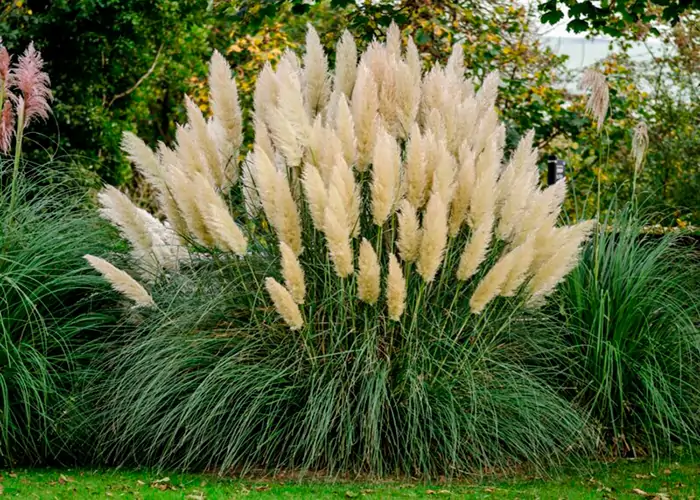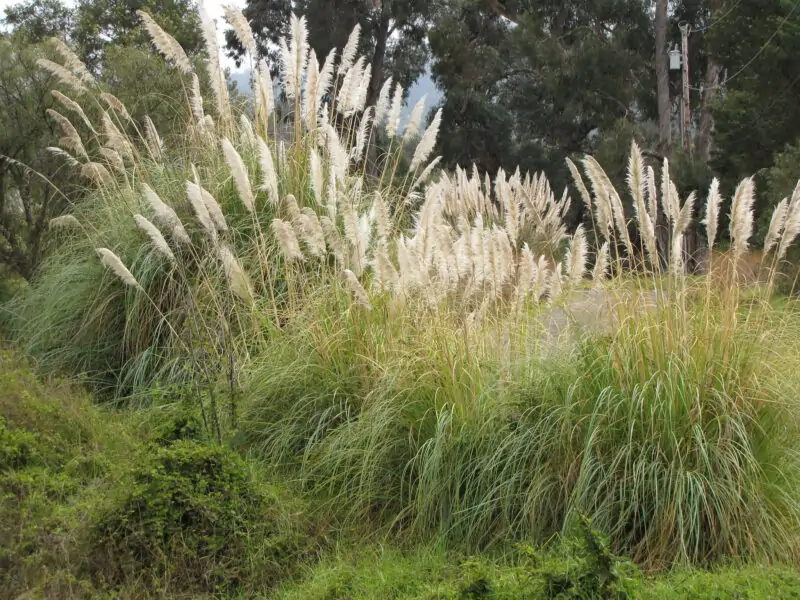How to Kill Pampas Grass: 8 Effective Ways to Get Rid of Pampas Grass

Struggling with invasive pampas grass, also known as Cortaderia selloana, in your garden? You’re not alone. This ornamental grass, native to South America, is stunning and elevates any landscape. However, if not controlled, it can quickly overrun your yard, crowding out native plants. Pampas grass can grow 10 feet tall and sprout new plants rapidly, making it difficult to get rid of. In this guide, we’ll show you how to kill pampas grass effectively, and remove the entire root system, ensuring that this pesky plant won’t return.
Hire Professional Assistance
When the infestation is severe, professional help can be beneficial. If the grass covers a large area that’s hard to manage, consider a professional gardener or landscaper. They know how to remove pampas grass without causing further damage.
Professionals have access to more potent herbicides and tools than local hardware stores. They can safely handle the removal of large clumps of pampas grass. Also, they can dispose of the cut grass correctly. Burning the grass can lead to wildfires. Professionals ensure safe removal while avoiding any risks during the process.
Utilize Herbicides
Herbicides are effective in killing this invasive weed. Glyphosate-based products like Roundup or Haloxfop-P-methyl based solutions like Verdict are designed for this purpose.
Apply these chemicals directly to the leaves using a spray technique. Follow the instructions carefully. The herbicide penetrates the root system, resulting in complete eradication within weeks. Remember to protect any nearby plants from overspray.
Always wear protective gear when handling chemical solutions. Some ingredients can be harmful if inhaled.
Manually Remove Clumps
Manual removal is another way to get rid of pampas grass. This method involves digging out clumps of pampas grass with a trowel. Use gloves to protect your hands from its sharp edges.
Ensure you remove each section carefully to eradicate the entire root system. This method requires patience, but it guarantees total elimination. No roots mean no new sprouts.
After removal, dispose of the grass properly. You can burn it or place it in a compost pile for natural decomposition.
Apply Mulch
Mulching is another effective method. This process involves covering the area around pampas grass with organic materials such as wood chips, leaves, or straw.
The goal is to prevent sunlight from reaching its roots. This hinders photosynthesis, leading to the grass’s death over time. Mulching also helps retain soil moisture and provides nutrients for better crop yield.
Prune the Grass
Pruning is an alternative to complete removal. Cut back the grass regularly before it goes to seed. This approach prevents new plants from sprouting without disturbing the root system.
This method also reduces fire hazards associated with dry plumes during hot seasons. Always use caution when handling pruning tools.
Dig out the Grass
If you prefer an eco-friendly solution, consider manually digging out the grass. Cut through each clump’s base to loosen the roots.
This method requires patience but guarantees total elimination. Uprooting removes all parts responsible for future regrowth.
Cut back Growth
Pampas grass can grow up to 10 feet tall and spreads quickly. Regularly cutting the grass back reduces its size and makes it easier to manage. This also prevents unwanted spread. Use sharp cutting tools like pruning shears or a lawnmower.
Use Plastic Coverings
Heavy-duty plastic coverings can also help control pampas grass. These coverings prevent sunlight from reaching the roots, hindering photosynthesis and causing the grass to die.
Lay down tarps or black polyethylene sheets on infested areas. Weight them down with rocks, stones, bricks, or soil to keep them in place.
FAQs
Yes, Pampas Grass, a beautiful South American grass, is considered invasive in some areas. It grows rapidly, can reach up to 10 feet in height, and spreads widely due to its size. Its long-lived root system can crowd out native plants if not controlled. This ornamental grass can also become a fire hazard, as it’s prone to wildfires.
The best time to remove pampas grass, including its roots, is during winter when growth has slowed, and new pampas grass plants are less likely to sprout. Early spring is also a suitable time, preferably before the flower heads start blooming. This timing makes it easier to cut the pampas grass, ensuring that the grass is cut back effectively.
No, you should not use a saltwater solution. This can kill everything growing in the treated area, including desirable grass, leaving barren patches. Too much salt can also kill other plants in the area. It’s better to use chemicals like Haloxfop or other methods like manually removing the grass clumps or burning pampas grass under controlled conditions.

Conclusion
In conclusion, there are several ways to get rid of this pesky pampas grass from your garden. These include manual removal techniques such as digging up the roots, using herbicides like glyphosate or Haloxfop-P-methyl based solutions, and applying mulch. Regular pruning or cutting back growth with sharp tools such as lawnmowers can also be effective in pampas grass control.
Always remember to wear protective gear when working with chemicals, as some substances can be harmful if inhaled. If you’re struggling with how to kill pampas grass and the problem persists, don’t hesitate to consult professionals. They have access to powerful herbicides specifically designed to eradicate this invasive species and can provide proper disposal methods to avoid any risks during the removal process. With these tips and methods, you’ll be well-equipped to kill pampas grass effectively.